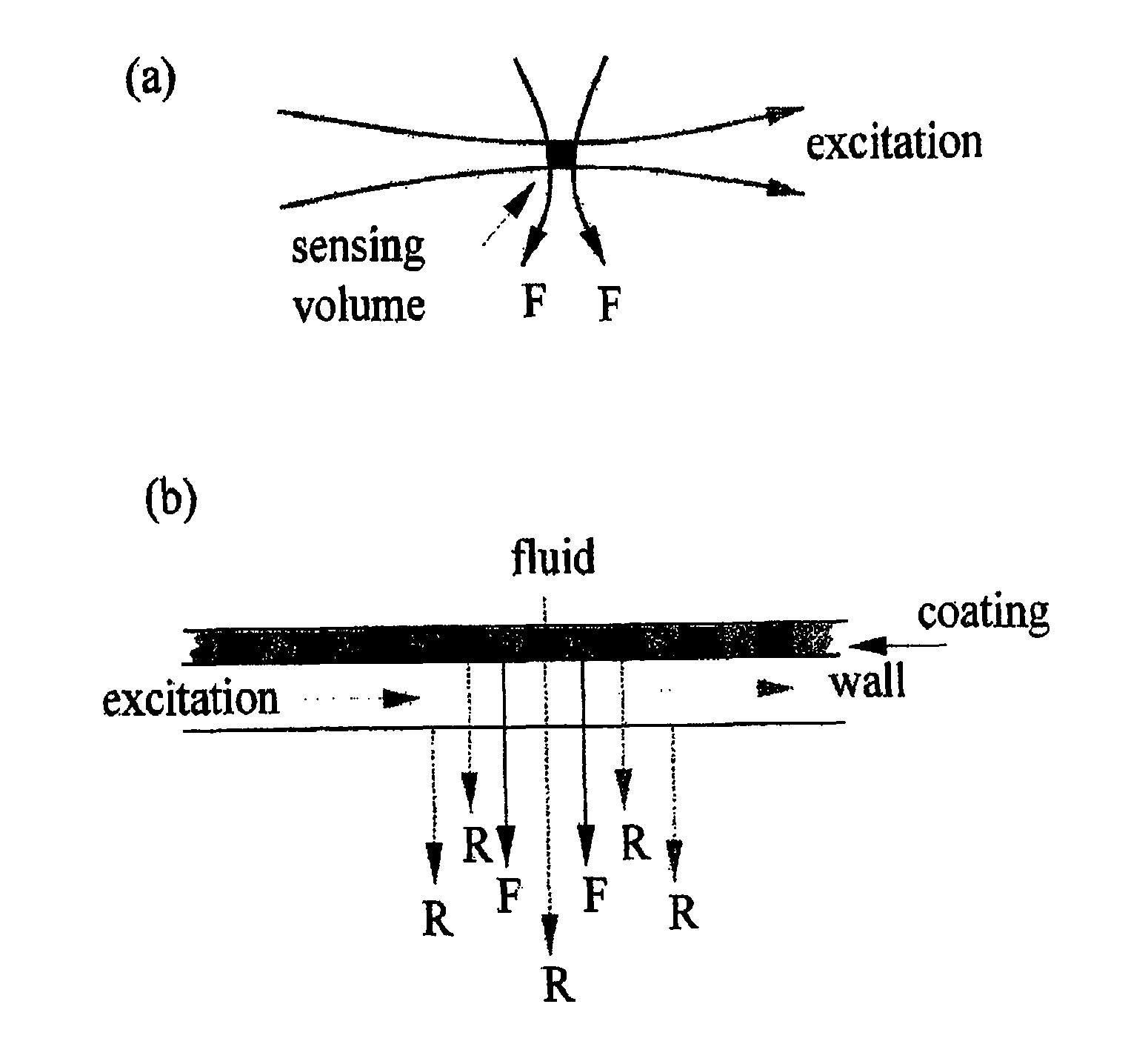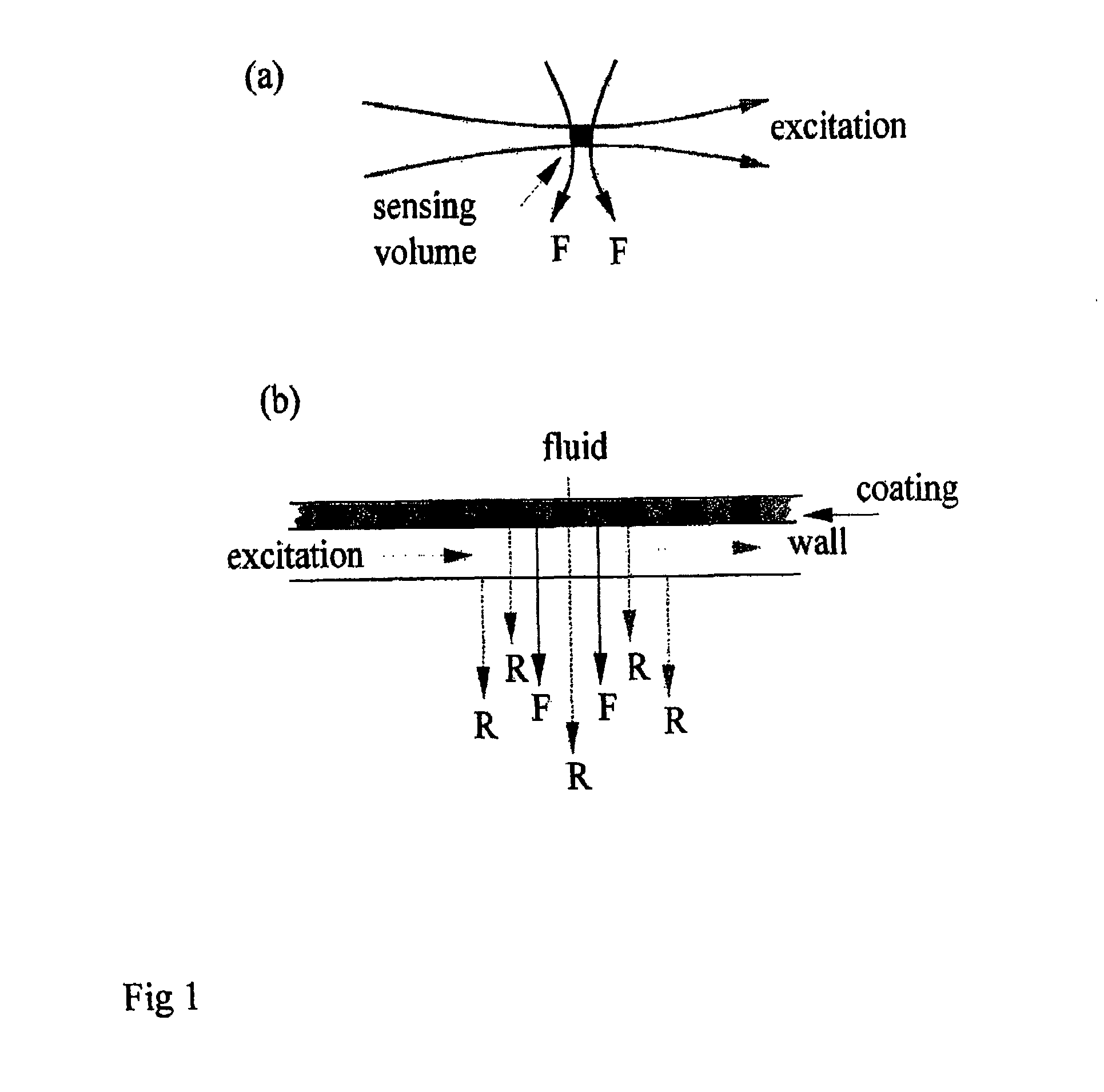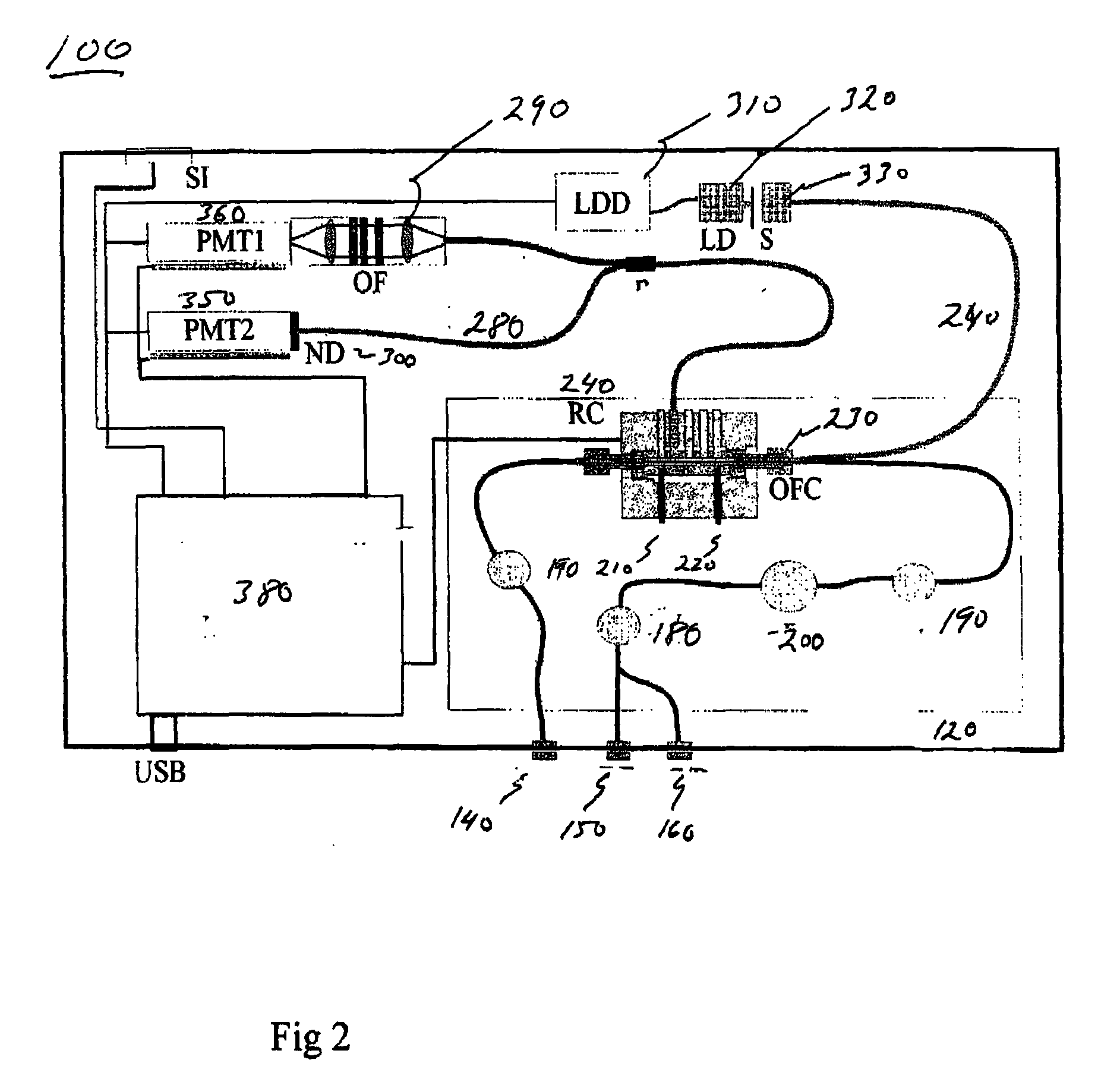Dual detector capillary waveguide biosensor and method for use thereof
a biosensor and capillary waveguide technology, applied in the direction of optical radiation measurement, luminescent dosimeters, fluorescence/phosphorescence, etc., can solve the problems of inability to meaningfully compare data coming out of different research laboratories, srm materials are not particularly useful for other types of fluorescence sensors, and the control of experimental and molecular factors is typically lacking in the techniqu
- Summary
- Abstract
- Description
- Claims
- Application Information
AI Technical Summary
Problems solved by technology
Method used
Image
Examples
Embodiment Construction
[0028]The following detailed description of preferred embodiments of the invention will be made in reference to the accompanying drawings. In describing the invention, explanation about related functions or constructions known in the art are omitted for the sake of clearness in understanding the concept of the invention, to avoid obscuring the invention with unnecessary detail.
[0029]The following theoretical considerations are to be observed. The ideal fluorescence experiment described by Gaigalas et al. is depicted in FIG. 1a. Using the arguments of Gaigalas et al. it is possible to estimate the fluorescent intensity (photon flux) in term of experimental and molecular parameters. If a single photon detector is illuminated by the fluorescent photon flux emanating from the sensing volume then the average number of fluorescent photon counts nF in time interval T is given by Equation (1):
〈nF〉=T[∫λΦF(λ)Q(λ)λ](1)
where Q(λ) is the quantum efficiency of a photodetector, for example, a phot...
PUM
| Property | Measurement | Unit |
|---|---|---|
| concentration | aaaaa | aaaaa |
| concentration | aaaaa | aaaaa |
| fluorescent activity | aaaaa | aaaaa |
Abstract
Description
Claims
Application Information
 Login to View More
Login to View More - R&D
- Intellectual Property
- Life Sciences
- Materials
- Tech Scout
- Unparalleled Data Quality
- Higher Quality Content
- 60% Fewer Hallucinations
Browse by: Latest US Patents, China's latest patents, Technical Efficacy Thesaurus, Application Domain, Technology Topic, Popular Technical Reports.
© 2025 PatSnap. All rights reserved.Legal|Privacy policy|Modern Slavery Act Transparency Statement|Sitemap|About US| Contact US: help@patsnap.com



